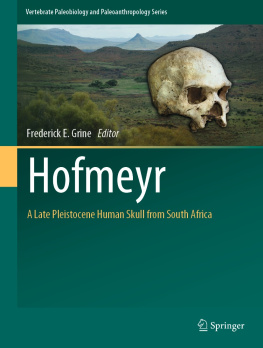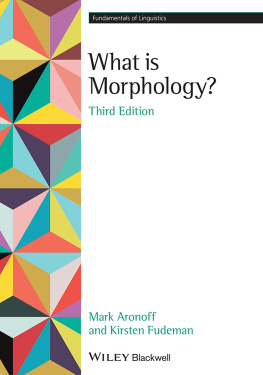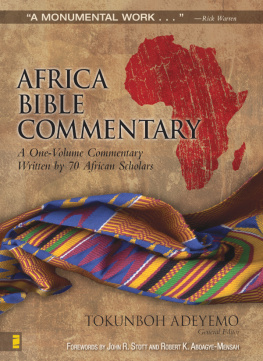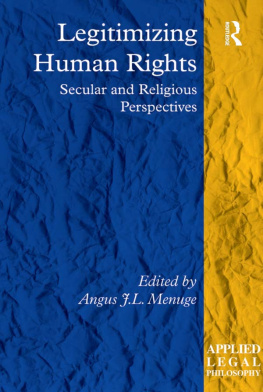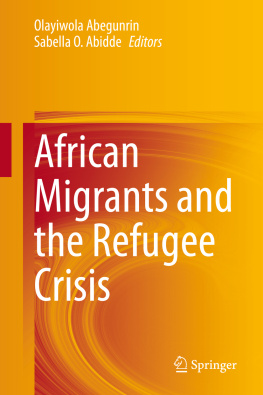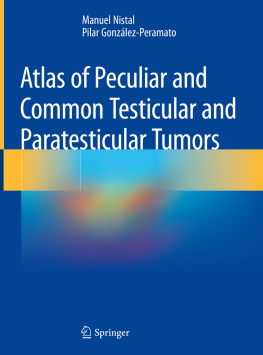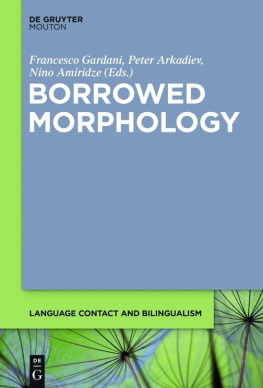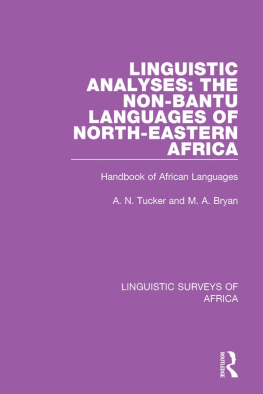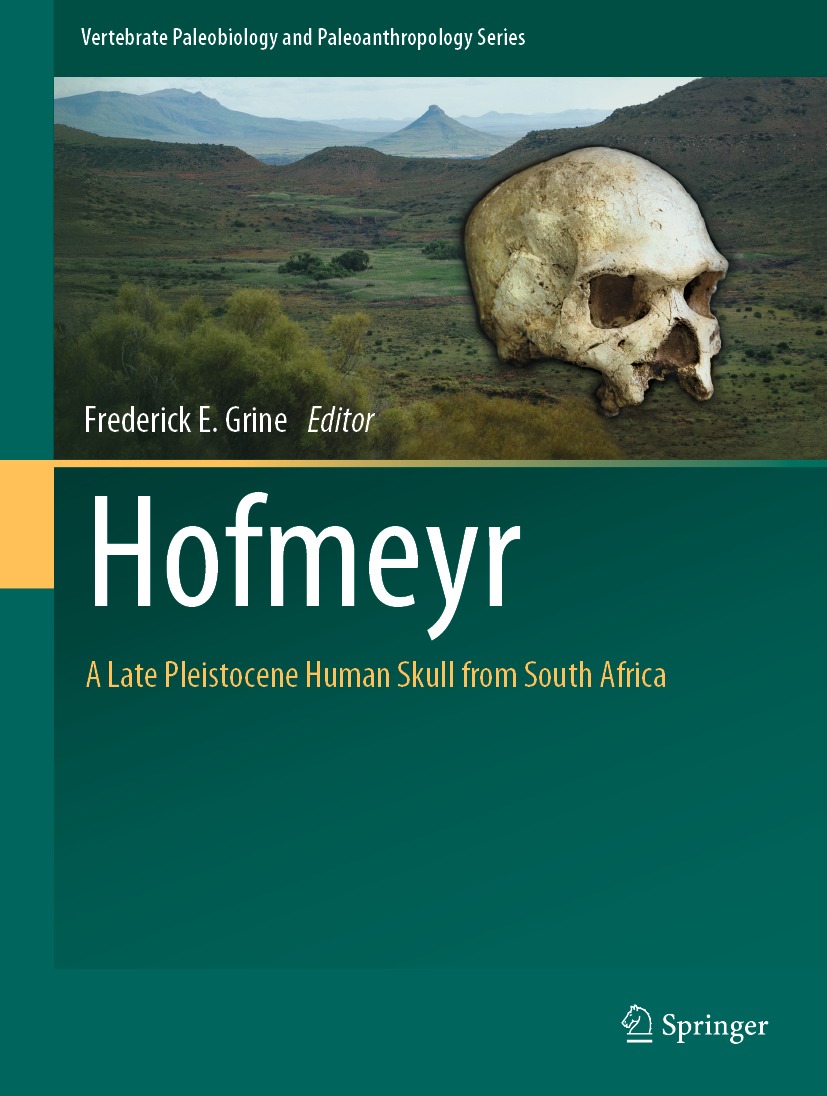Vertebrate Paleobiology and Paleoanthropology
Series Editors
Eric Delson
Vertebrate Paleontology, American Museum of Natural History, New York, NY, USA
Eric J. Sargis
Department of Anthropology, Yale University, New Haven, CT, USA
Focal topics for volumes in the series will include systematic paleontology of all vertebrates (from agnathans to humans), phylogeny reconstruction, functional morphology, Paleolithic archaeology, taphonomy, geochronology, historical biogeography, and biostratigraphy. Other fields (e.g., paleoclimatology, paleoecology, ancient DNA, total organismal community structure) may be considered if the volume theme emphasizes paleobiology (or archaeology). Volumes in the series may either be monographic treatments (including unpublished but fully revised dissertations) or edited collections, especially those focusing on problem-oriented issues, with multidisciplinary coverage where possible. The two Series Editors are assisted by an Editorial Advisory Board. All contributions in the series (whether monographs or chapters in edited volumes) will be peer-reviewed by at least three readers, at the level of a journal submission.
Edited by
Eric Delson
City University of New York and American Museum of Natural History, NY, USA
eric.delson@lehman.cuny.edu
http://www.nycep.org/ed/
Eric J. Sargis
Yale University, New Haven, USA
eric.sargis@yale.edu
http://www.yale.edu/anthro/people/esargis.html
Editorial Advisory Board
Ross D.E. MacPhee (American Museum of Natural History, New York, NY, USA), Peter Makovicky (University of Minnesota, Minneapolis, MN, USA), Sally McBrearty (University of Connecticut, Storrs, CT, USA), Jin Meng (American Museum of Natural History, New York, NY, USA), Tom Plummer (Queens College/CUNY, Queens, NY, USA).
Editor
Frederick E. Grine
Hofmeyr
A Late Pleistocene Human Skull from South Africa

Logo of the publisher
Editor
Frederick E. Grine
Departments of Anthropology and Anatomical Sciences, Stony Brook University, Stony Brook, NY, USA
ISSN 1877-9077 e-ISSN 1877-9085
Vertebrate Paleobiology and Paleoanthropology
ISBN 978-3-031-07425-7 e-ISBN 978-3-031-07426-4
https://doi.org/10.1007/978-3-031-07426-4
Springer Nature Switzerland AG 2022
This work is subject to copyright. All rights are reserved by the Publisher, whether the whole or part of the material is concerned, specifically the rights of translation, reprinting, reuse of illustrations, recitation, broadcasting, reproduction on microfilms or in any other physical way, and transmission or information storage and retrieval, electronic adaptation, computer software, or by similar or dissimilar methodology now known or hereafter developed.
The use of general descriptive names, registered names, trademarks, service marks, etc. in this publication does not imply, even in the absence of a specific statement, that such names are exempt from the relevant protective laws and regulations and therefore free for general use.
The publisher, the authors, and the editors are safe to assume that the advice and information in this book are believed to be true and accurate at the date of publication. Neither the publisher nor the authors or the editors give a warranty, expressed or implied, with respect to the material contained herein or for any errors or omissions that may have been made. The publisher remains neutral with regard to jurisdictional claims in published maps and institutional affiliations.
Cover image: Photo of the Karoo landscape of the region near Hofmeyr taken from the lower slopes of the Bamboesberg Mountains. The conical hill, known as Spitskop, is located directly east of the Hofmeyr locality. The Burgersdorp Formation is exposed on the proximate range of hills. Photo by F.E. Grine. Inset photo of the Hofmeyr cranium by F.E. Grine. Cover design by F.E. Grine and K. Thompson.
This Springer imprint is published by the registered company Springer Nature Switzerland AG
The registered company address is: Gewerbestrasse 11, 6330 Cham, Switzerland
Foreword
Over the past decade and a half, the Hofmeyr skull has ignited much curiosity and interest from members of the public, both international and local, who visit the East London Museum. As a well-travelled specimen resting in its original home after its discovery almost seven decades ago, the skull has rekindled a reminder of the rich fossil heritage of the Eastern Cape Province of South Africa and a deeper connection to the story of the evolution of our species. Today the sleepy Karoo town of Hofmeyr has its name carried far and wide by a chance find of a hominin skull from the eroded banks of the Vlekpoort River in 1954. The town has now been elevated to scientific significance through the dedicated research of the authors of the chapters in this volume and the persistent leadership and guidance of its editor, Frederick Grine. The skull rose to worldwide attention in 2007 with the first seminal paper published by Fred Grine and colleagues in Science entitled Late Pleistocene human skull from Hofmeyr, South Africa, and modern human origins. Indeed, the importance of Hofmeyr was recognized by Time magazine, which declared this Science paper to have conveyed one of the top ten scientific discoveries of 2007.
A number of questions have had their answers revealed in the chapters of this book which serve the growing fascination people have regarding our evolutionary history. The skull remained unattended and lost to science until Alan Morris re-discovered it as part of audited research on museum human skeletal remains. This was a first and important step in bringing the Hofmeyr skull back into the scientific domain and more importantly bridging a gap between mere curiosity and its link in the study of palaeoanthropology.
This up-to-date collection of work on the Hofmeyr skull elucidates a detailed multidisciplinary synthesis of research on the specimen ranging from the history of its discovery to all aspects of its morphology, geological setting, the movement and diet of the Hofmeyr individual, an interpretation of the endocast, the bony labyrinth and paranasal sinuses and its dentition. It also provides encouragement to museum curators who have human skeletal material in their care never to underestimate the value of any specimen that has not been rigorously investigated particularly in the light of the rapid advances in dating techniques, 2D and 3D morphometric analysis and collaborative research which made sense of the medley of attributes that a single find revealed.
This volume of work makes a further important contribution to the manner in which museums and heritage authorities value paleoanthropological specimens. For the East London Museum, it has placed the Hofmeyr skull into a wide paleoanthropological research orbit allowing a more comprehensive volume of facts to be synthesized for educational programmes which are integral to the vision and objectives of our South African heritage institutions. In addition, through the efforts of Fred Grine, a cast of the Hofmeyr skull has found a place in one of the most comprehensive human origins displays in any museum in the worldthe Koch Hall of Human Origins at the Smithsonian Institutions National Museum of Natural History in Washington, DC. This has brought great credence to the Eastern Cape Province and the curatorial home of the skull. At a local level, a second cast has been used extensively for outreach programmes to promote the study of palaeoanthropology, and this has been a popular point of call for hundreds of learners at the annual Scifest Africa held in Makhanda (previously Grahamstown).

